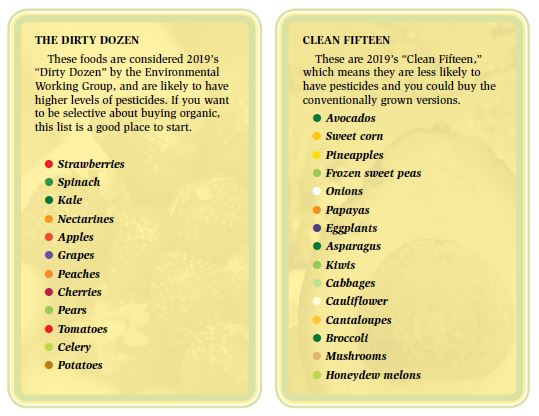 Last year in the United States, sales of organic food and products topped $48 billion — that’s up almost 10 percent over the previous year, according to the Organic Trade Association. And while this growing industry is showing no signs of stopping, organic farming is hardly a trend; it’s how our parents and grandparents tended to their crops and cattle. Then in the 1950s, pesticides and artificial fertilizers were introduced — creating what is now called “conventionally-grown” food. So what’s the difference and why does it matter?
Last year in the United States, sales of organic food and products topped $48 billion — that’s up almost 10 percent over the previous year, according to the Organic Trade Association. And while this growing industry is showing no signs of stopping, organic farming is hardly a trend; it’s how our parents and grandparents tended to their crops and cattle. Then in the 1950s, pesticides and artificial fertilizers were introduced — creating what is now called “conventionally-grown” food. So what’s the difference and why does it matter?
- Certified organic means no pesticides, synthetic fertilizers or antibiotics
- GMOs (genetically modified organisms) are not allowed when growing organically
- Regenerative practices used in organic farming help keep the soil and our food full of minerals
- Organic practices are better for the environment and the health of farm workers
- Organic dairy has higher levels of heart-healthy fats and no hormones or antibiotics
 While the argument to eat organic seems simple, choosing organic isn’t always easy — it’s harder to find and usually more expensive. But there are ways to go organic on a budget.
While the argument to eat organic seems simple, choosing organic isn’t always easy — it’s harder to find and usually more expensive. But there are ways to go organic on a budget.
- Stores like Walmart, Target and Foodland have a good selection of affordable options
- Look for generic in-store brands to save more
- Costco has great organic choices. Partner with a friend or family member to make it cheaper
- Buy grains, nuts and cereals at the bulk bins • Start a garden and grow your own food
- Eat more plant-based meals. Organic whole grains and veggies are cheaper than meat
- Farmers markets are great, but make sure to ask where the produce is from and if it’s organic
- Subscribe to a local, organic CSA service
If eating organic is still too steep, it’s more important that you get enough greens and fruit in your diet. The USDA recommends seniors get at least two servings of fruit and five servings of veggies every day. If that seems like a lot, juicing and smoothies are a great way to get them in. Just make sure, no matter what you choose, to wash everything before you eat it!
Go local! You can’t get any more natural and organic than the varieties found here in Hawai‘i. Consider swapping an apple with a juicy mango, or try a jabong instead of a grapefruit. How about soursop? Or lychee? The list goes on. The diversity is not only good for you, it will help your plate look as colorful and as multicultural as our islands!. Photos courtesy of 808 Organics


Leave a Reply